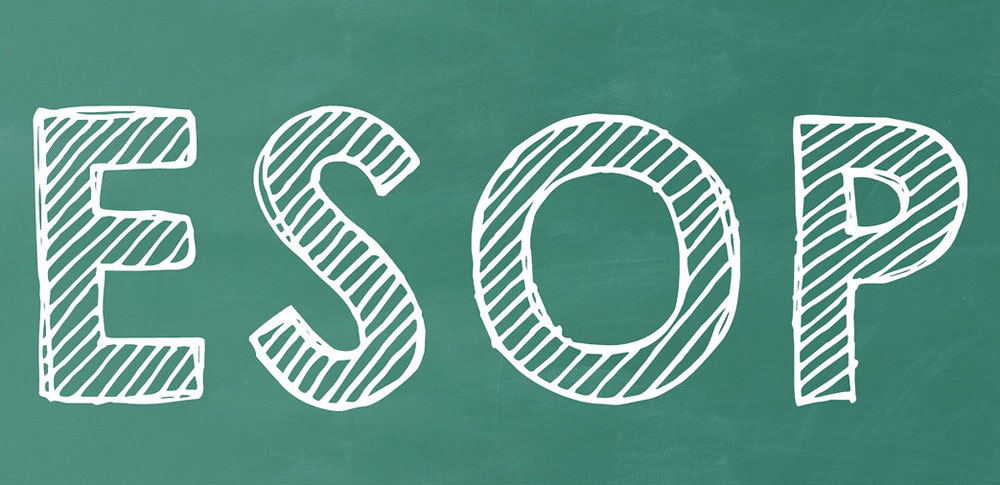
October 23, 2020; New York Times
In 2010, amid the Great Recession, 12.1 percent of private sector employees reported being laid off; by contrast, 2.6 percent of private sector employees working in employee-owned firms or employee stock ownership plan (ESOP) companies were laid off. The savings in terms of reduced federal government costs: a cool $37 billion—to say nothing of the social and economic benefits for millions of people’s lives.
Now we have some preliminary figures for the 2020 pandemic economic downturn, courtesy of researchers at Rutgers University, and the numbers are telling:
Decline in total employment
- ESOP majority employee-owned, mean job loss—4.8 percent
- ESOP majority employee-owned, median job loss—0.4 percent
- All other firms, mean loss of jobs—19.5 percent
- All other firms, median job loss—13 percent
The findings are compiled in a new report, Employee-Owned Firms in the Pandemic: How Majority-Owned ESOP and Other Companies Have Responded to the Covid-19 Health and Economic Crises. It highlights the results of a survey conducted by Rutgers economic sociologist Joseph Blasi, who directs the Institute for the Study of Employee Ownership and Profit Sharing, and his colleague, economist Douglas Kruse.
The survey, funded by the Employee Ownership Foundation, was completed by 247 executives from ESOP Association member companies that were majority-employee owned, and 500 executives from a sampling of non-ESOP companies with 50 or more employees.
The fact that the median firm’s job loss is less than the mean is no surprise—after all, the pandemic has forced major job cuts at some firms while others go unscathed. But notice the difference between employee-owned firms and those that are not. All told, the data shows that ESOPs were 3.63 times more likely to retain non-managers, and 3.95 times more likely to retain managers.
Among essential businesses, ESOPs laid off staff at only one-fourth the rate of non-ESOP companies. Among businesses like restaurants that were not deemed essential and where therefore layoffs were more likely, the rate of layoffs was still 2.77 times lower at ESOPs than at non-ESOP firms.
Sign up for our free newsletters
Subscribe to NPQ's newsletters to have our top stories delivered directly to your inbox.
By signing up, you agree to our privacy policy and terms of use, and to receive messages from NPQ and our partners.
ESOPs also outperform other firms in health and safety. For instance, 85.1 percent of ESOPs were able to transfer work home, compared to 66.8 percent of other firms. ESOPs were also quicker to provide personal protective equipment (PPE) to their workers, with 53.7 percent of ESOP firms having provided PPE by the end of March, compared to 41.3 percent of non-ESOP firms. Overall, it is estimated that 98.3 percent of ESOPs ultimately took protective measures on behalf of their workers, compared to 88.9 percent for firms overall.
As Paul Sullivan observes in the New York Times, “Employee-owned companies are still a small segment of the US corporate landscape.” Still, it is a sizable segment. According to the National Center for Employee Ownership, about 10.3 million Americans work for one of the 6,000-plus firms that are at least partially owned by employees, with total worker shares worth an estimated $1.456 trillion. Even if you exclude employees at publicly traded companies, you are still talking about a segment that includes 1.466 million employees with $183.88 billion in assets.
Importantly, as NPQ has covered, with more and more baby boomer business owners retiring, the need for succession is rising to the fore—and as the data show, selling businesses to workers, in addition to the benefits to the parties, has significant positive economic spillover benefits in terms of stabilizing employment and minimizing layoffs.
As Sullivan notes, selling businesses to employees can also benefit family business owners. “For families who own businesses and are wondering about their next step, selling to employees is an opportunity that analysts say owners should consider. It keeps the company intact, has tax benefits for the company and the owners, and it allows the owners to sell without worrying that the business might be gutted and sold off in parts.”
Jere Doyle, a family wealth strategist and senior vice president at Bank of New York Mellon, tells Sullivan that because current federal law specifies that when a firm is sold to the employees the exiting owner can buy stock and can defer the capital gain until the stock is sold, if the capital gains rate rose, ESOPs might become more common.
Another benefit of employee ownership, emphasizes Sullivan, is that an ESOP keeps established companies intact, with the business guided by the employees who become the new owners.
“If I sold my company to my competitors, do you think Ray Baker’s name would ever be said again?” asks Ken Baker, who is chief executive of New Age Industries, the flexible tubing company his father, Ray, started in 1960. “We have a bust of my father in the lobby. His legacy and my brother’s legacy continue on.”—Steve Dubb
Correction: This article has been altered from its initial form to fix a publication error that dropped significant digits from the decline in total employment figures.













